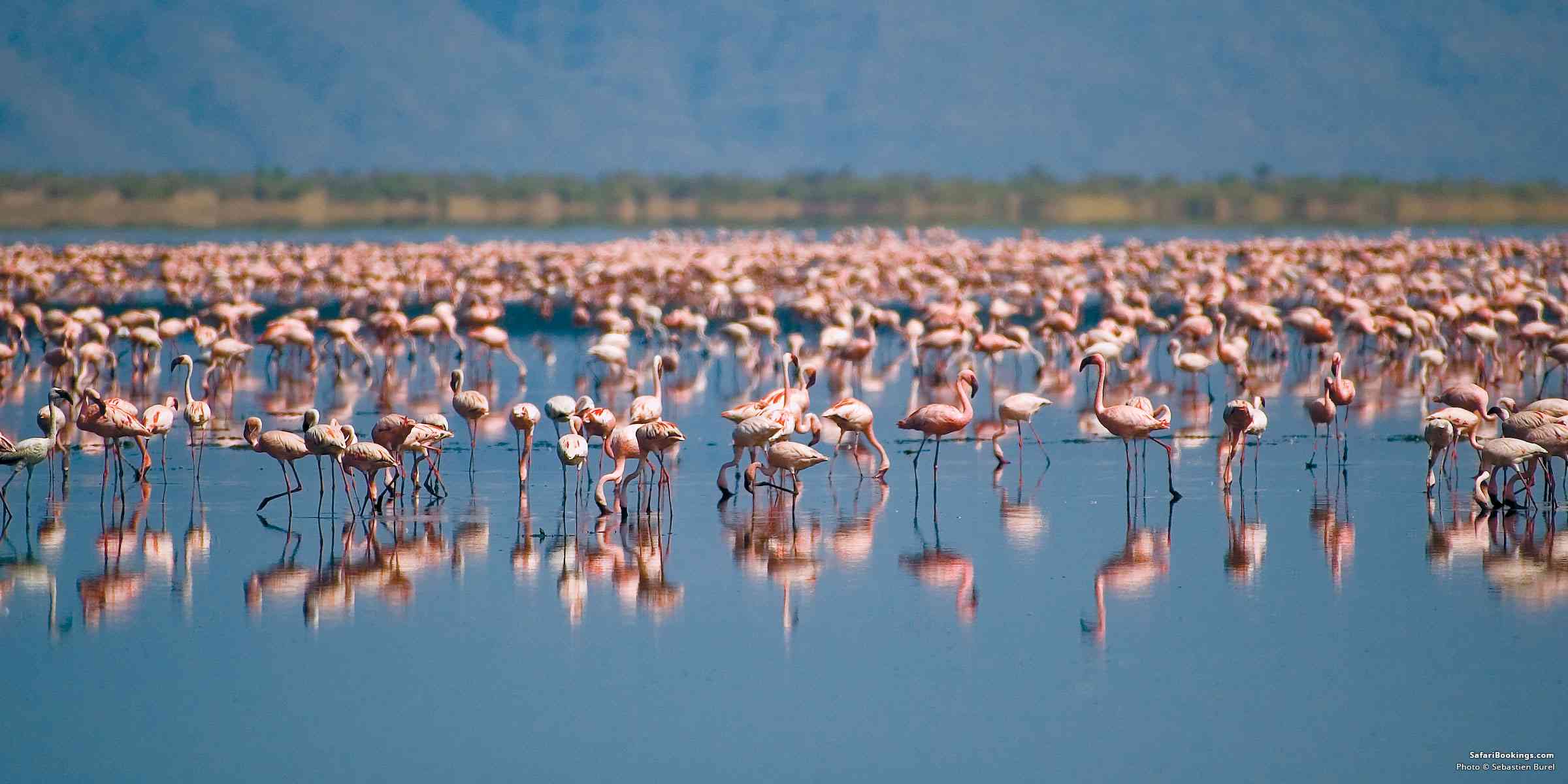
5 Fascinating Facts About Flamingos (Phoenicopteridae)
 By
Mike Unwin
By
Mike Unwin
Mike is an award-winning wildlife writer, former editor of Travel Zambia magazine and author of the Bradt Guide to Southern African Wildlife.
These unmistakable waterbirds seem ludicrously proportioned, especially when flying overhead, dangling their long legs and neck. Two species flamingos occur in southern Africa: the greater flamingo (Phoenicopterus ruber) is the larger and has a black tip to its pale bill; the lesser flamingo (Phoenicopterus minor) is smaller pinker, with a dark red bill. Their huge gatherings in the soda lakes of the rift valley are among the world’s most impressive wildlife spectacles. Below are five fascinating facts about flamingos.
Want To Go on an African Safari?
Click on the button below to compare African safaris offered by top-rated tour operators.
 By
Mike Unwin
By
Mike Unwin
Mike is an award-winning wildlife writer, former editor of Travel Zambia magazine and author of the Bradt Guide to Southern African Wildlife.
More About This AuthorAfrican Safari Tours
-
![4-Day Rwanda Gorilla Trekking & Golden Monkey Safari]()
4-Day Rwanda Gorilla Trekking & Golden Monkey Safari
$2,718 pp (USD)
Rwanda: Private tour
Mid-range Lodge & HotelYou Visit: Kigali (Start), Kigali Airport (Kigali), Volcanoes NP (Gorillas), Kigali (End)

Hermosa Life Tours and Travel
5.0/5 – 207 Reviews
-
![7-Day Tanzania's Top Safari Highlights (with Balloon)]()
7-Day Tanzania's Top Safari Highlights (with Balloon)
$4,640 to $5,090 pp (USD)
Tanzania: Private tourLuxuryLodge & Tented Camp
You Visit: Arusha (Start), Tarangire NP, Lake Manyara NP, Serengeti NP, Ngorongoro Crater, Arusha (End)

Lion King Adventures
5.0/5 – 1,350 Reviews
-
![5-Day The Ultimate Safari in Tanzania]()
5-Day The Ultimate Safari in Tanzania
$1,650 pp (USD)
Tanzania: Private tour
Mid-range Lodge & Tented CampYou Visit: Arusha (Start), Tarangire NP, Serengeti NP, Central Serengeti NP, Ngorongoro Crater, Lake Manyara NP, Arusha (End)

Destiny Explorers
4.9/5 – 131 Reviews



 Subscribe to our newsletter
Subscribe to our newsletter
 Follow us on Instagram
Follow us on Instagram





